Introduction
Established in 1916 in Seattle, the USA.
Today, the company is the world’s largest manufacturer of both commercial jetliners and military aircraft.
The company also designs and manufactures “defence, electronic equipment, rotorcraft, satellites, missiles, launch vehicles, and advanced communication equipment.
Offers its services and products to clients spread across 150 countries globally.
Boeing has over 170,000 workers (Boeing, 2014).
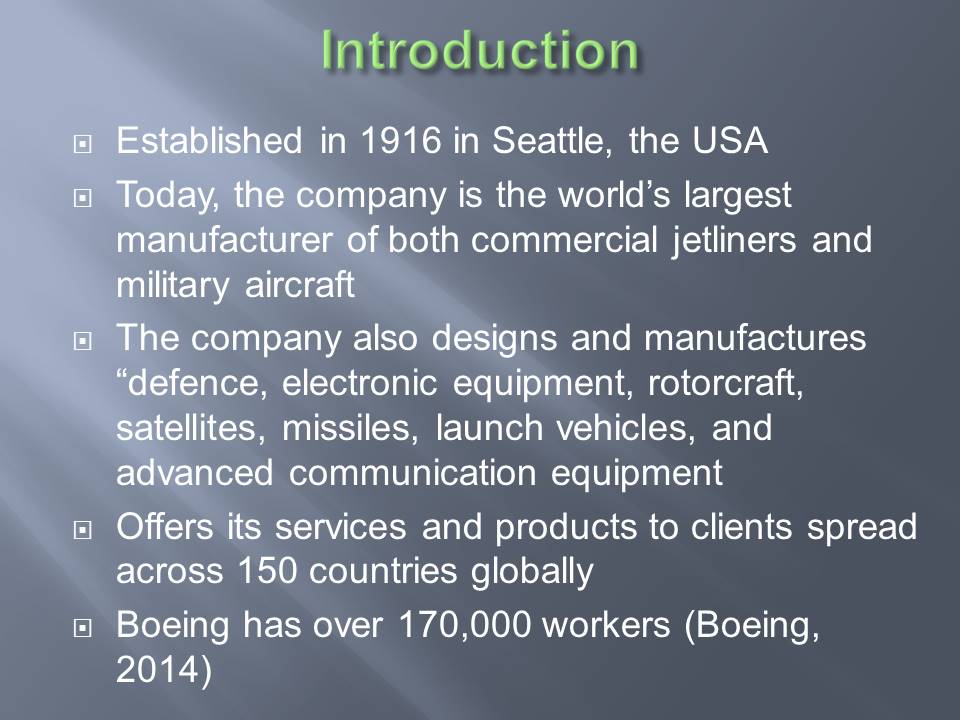
Long-term Market Outlook 2013 – 20132 Revenues
- World: Delivery units 2013 to 2032 – 35,280.
- World: Value: $4,840 billion Share of fleet. This is a 20-years forecast.
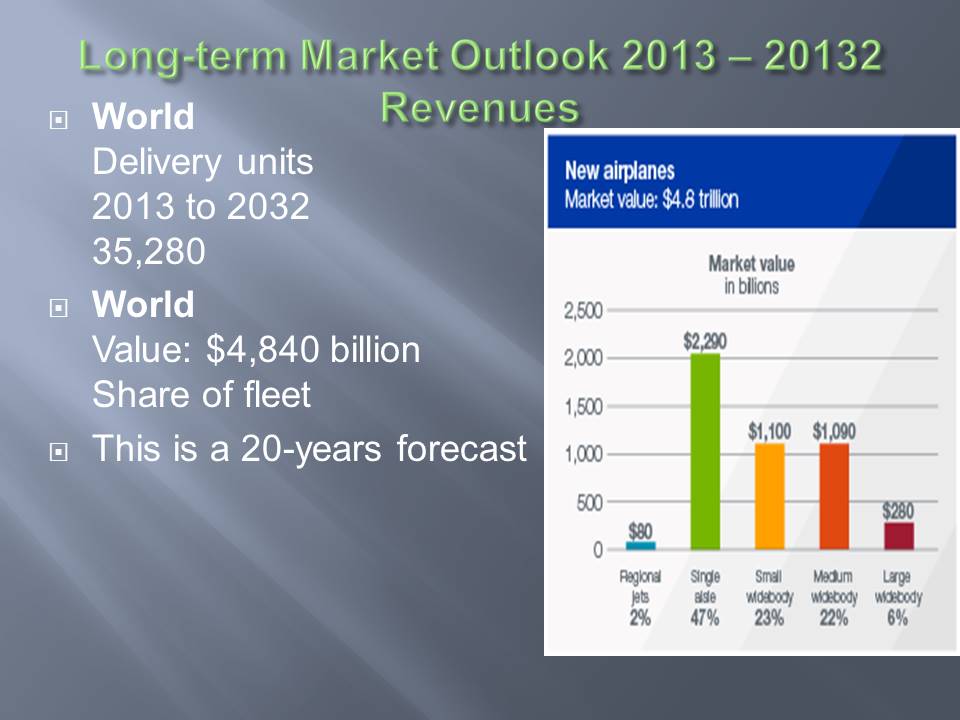
The Current Market Outlook
Long-term forecast of air traffic volumes and airplane demands (Tinseth, 2014).

The Shape of the Market
Boeing forecasts that 14,350 of these new airplanes (41 %) will replace older, less efficient airplanes, reducing the cost of air travel and decreasing carbon emissions.
Other 20,930 airplanes will facilitate fleet growth to drive growths in emerging markets.
Widebody share will increase by one percent to 24% by 2032.
About 24,670 airplanes (70 percent) shall be single-aisle airplanes supplied in emerging markets like China.
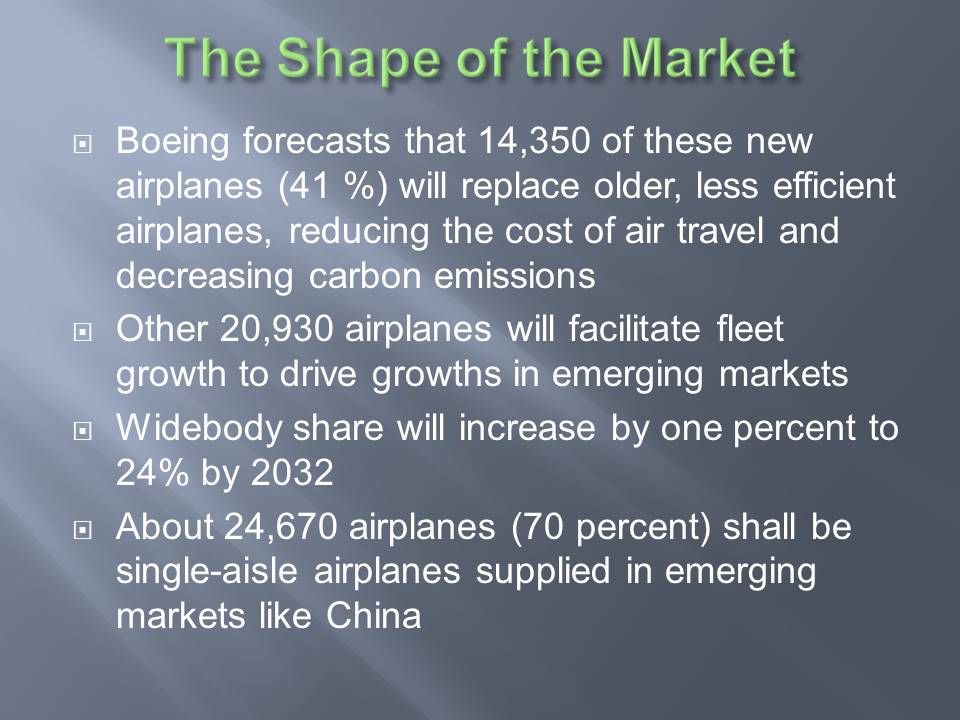
Demands by regions
¨Emerging economies are driving demands for airplanes.
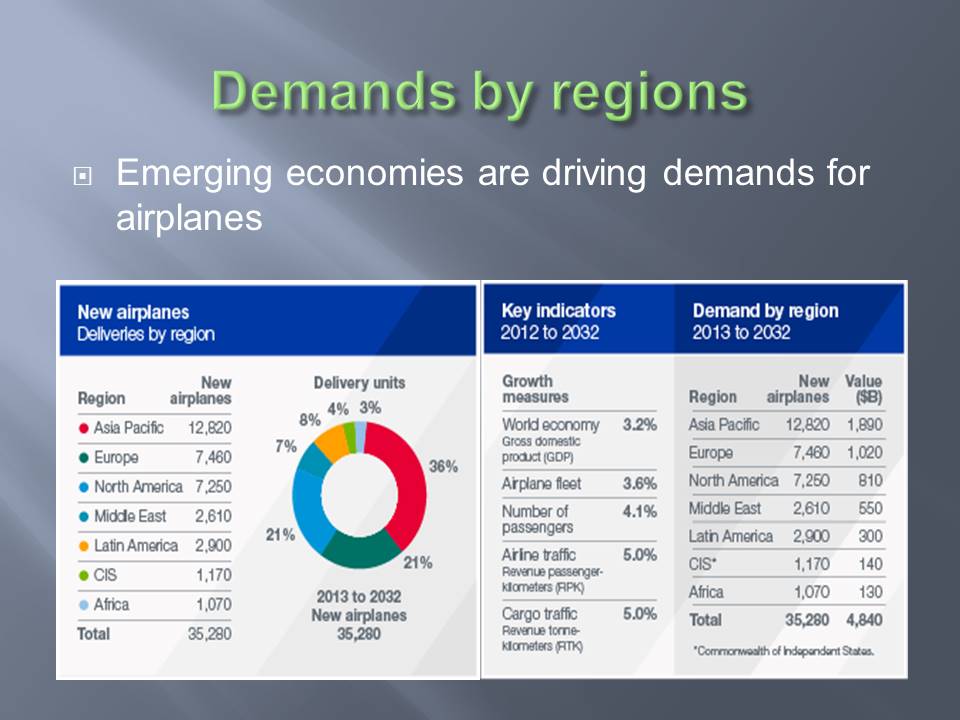
Pilot & Technician Outlook
Boeing will require 498,000 new commercial airline pilots and 556,000 new maintenance technicians for the next 20 years.
Demands by regions will differ.
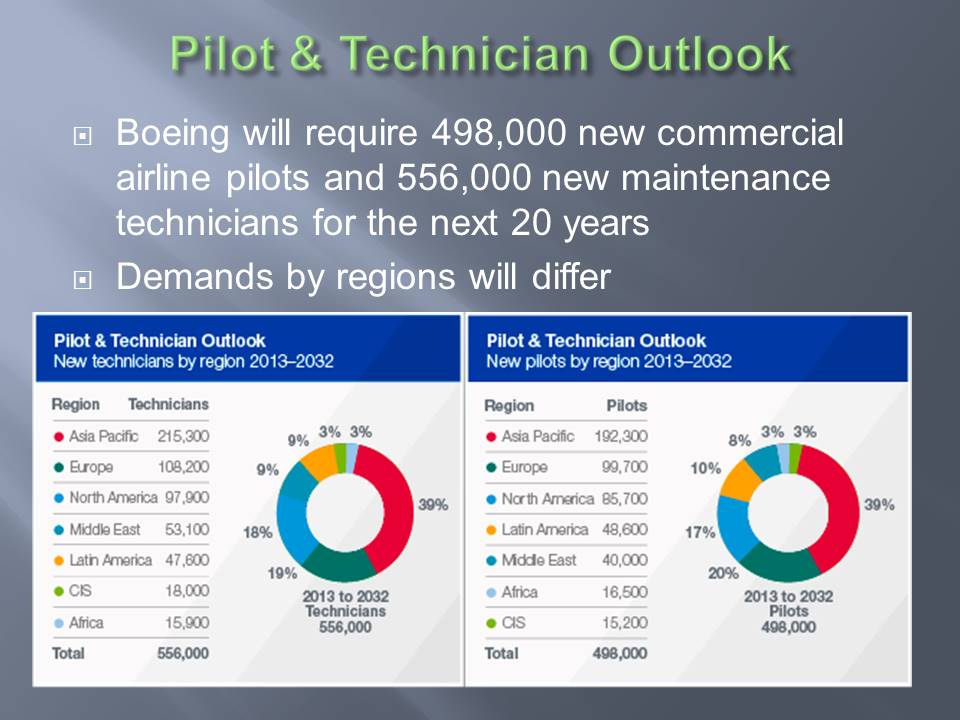
Drivers of Air travel Demands
Boeing notes that air travel demand is resilient against change economic conditions.
Key drivers of air travel include economic growth, global trade, and traveler values.
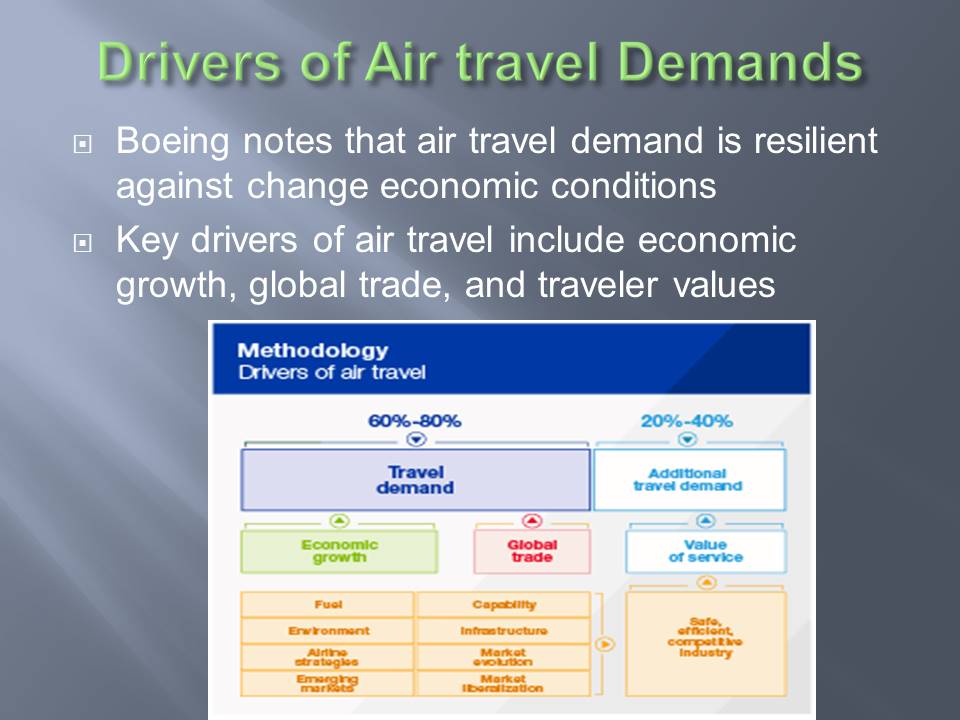
Air Cargo Market
Air cargo continues grow because of industries that require transport of time-sensitive commodities.
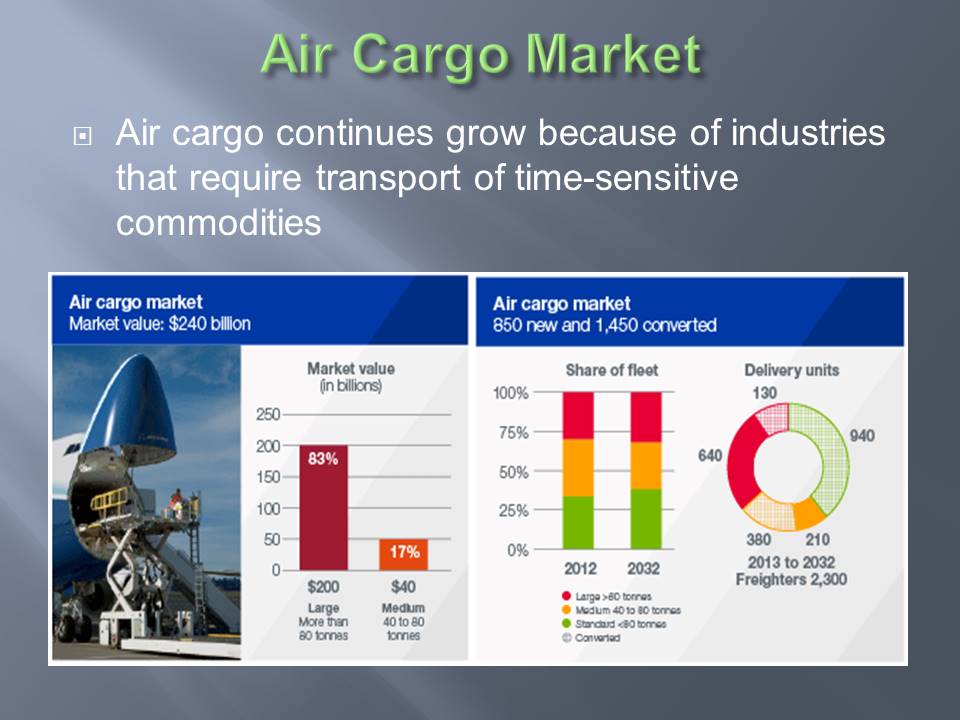
Air cargo
Since 1982, air cargo growth has achieved an average annual growth of 5.4%.
Air cargo traffic will grow by an average 5.0 percent growth per year over the next 20 years.
The freighter fleet will grow by more than half, from 1,730 airplanes in 2012 to 2,810 in 2032.
Emerging markets will fuel the growth.
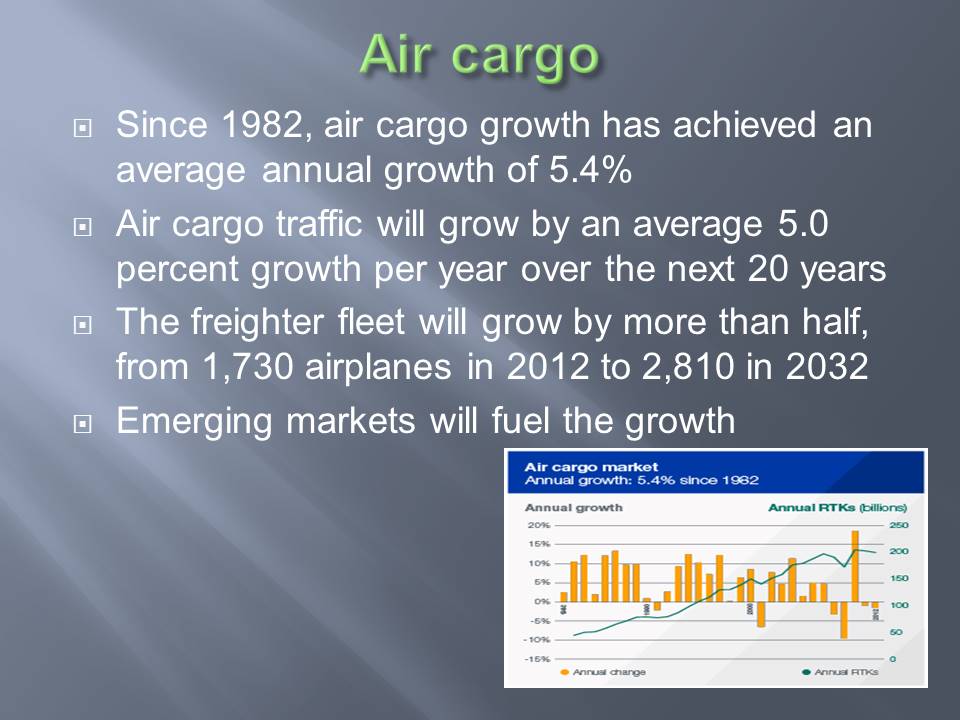
Geopolitical Trends
Boeing is a global business.
It supplies over 80% of commercial planes outside the US.
The company aims to understand impacts of economic and political trends on its business.
Boeing actively supports public policies that promote the aviation business.
It may to capitalized on market liberalization efforts of various governments, particularly in the Gulf region and other emerging economies globally (Goold, 2013).
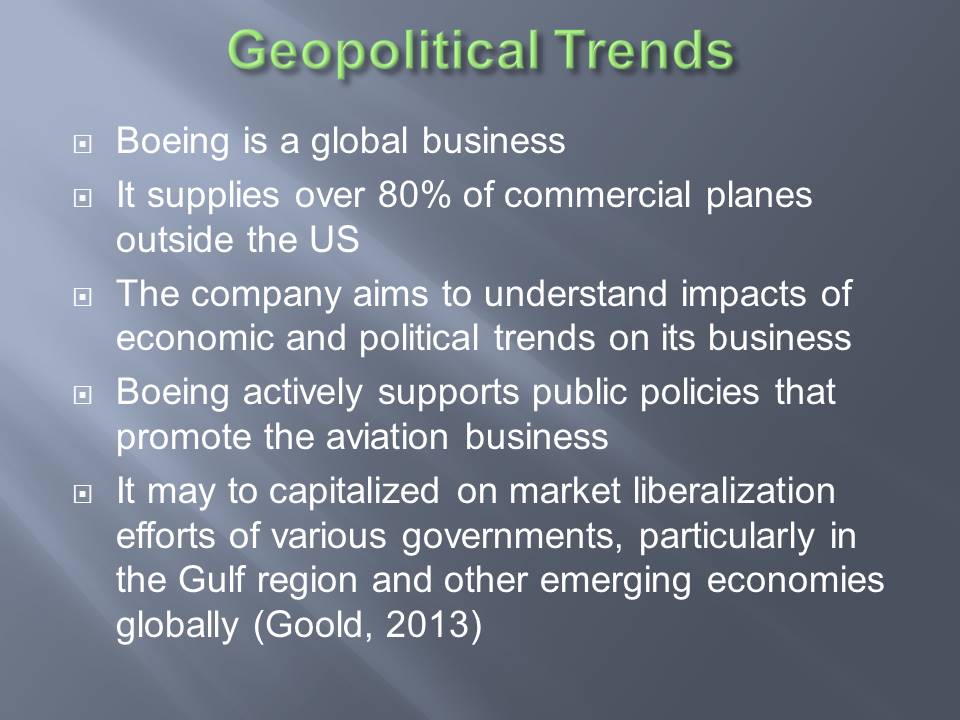
Summary
¨Boeing forecasts a long-term demand for 35,280 new airplanes, valued at $4.8 trillion
¨The company projects that 24,670 single-aisle airplanes will be delivered, representing 70 percent of commercial airplane deliveries and 47 percent of total delivery value in the next 20 years
¨Demands differ from one region to another
¨The company will need 498,000 new commercial airline pilots and 556,000 new maintenance technicians to fly and maintain the new airplanes for the next 20 years
¨Boeing plans to add 1,000 engineers over the next two years in Long Beach – expansion targets high growth areas (Hennigan, 2014)
¨Asia Pacific, Europe, and the Middle East account for more than 90 percent of large-airplane demand in the 20-year forecast
¨Air travel demand is resilient
¨Air cargo will continue to grow at an average rate of 5% per annum for the next 20 years
¨Key drivers of air travel include economic growth, global trade, and traveler values
¨Boeing considers the important of political and economic factors on its global operations
¨Boeing does not publicly displace its cost and investment projections
¨Note: all figures and images are from Boeing 2014.
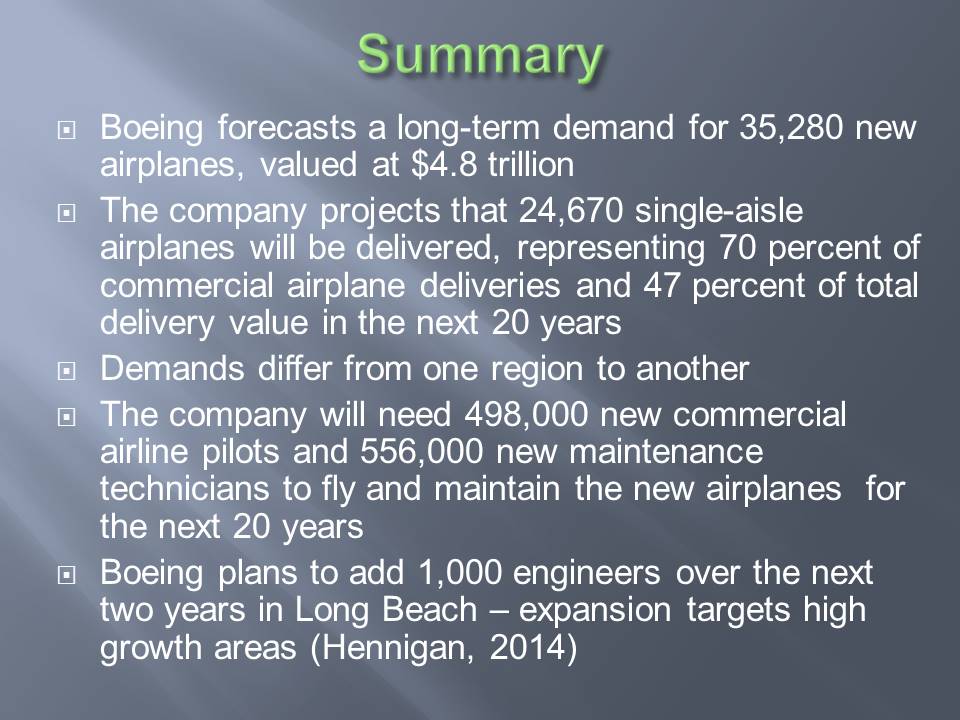
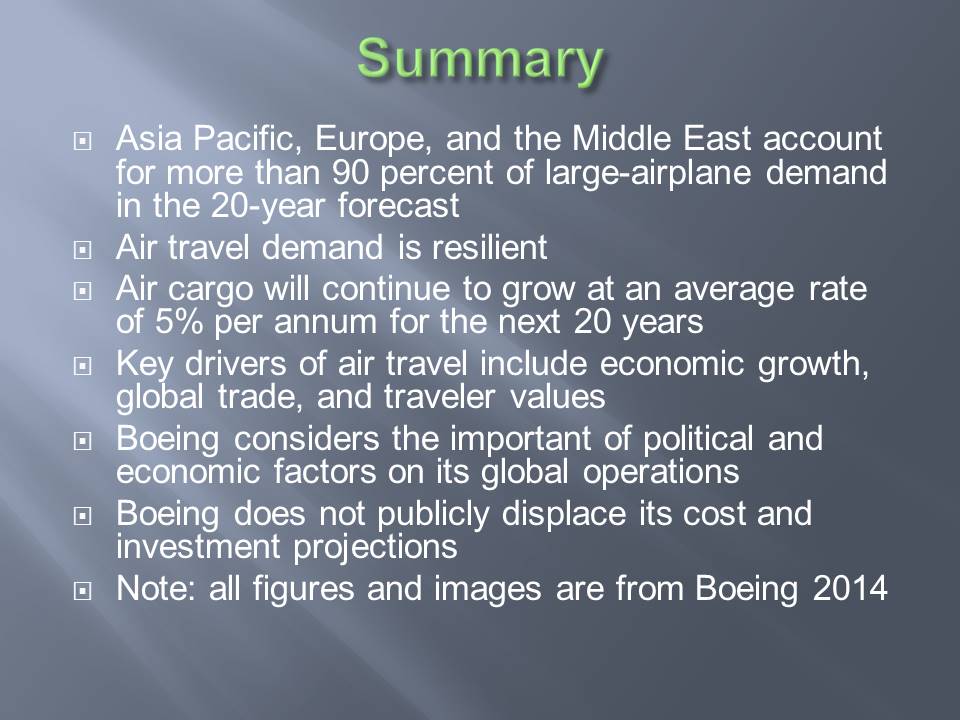
References
Boeing. (2014). Boeing: About Us.
Goold, I. (2013). Airbus: Middle East Will Increase World Traffic Share .
Hennigan, W. (2014). Boeing plans to increase workforce in Long Beach, Seal Beach. Los Angeles Times.
Tinseth, R. (2014). The Current Market Outlook 2013-2032.